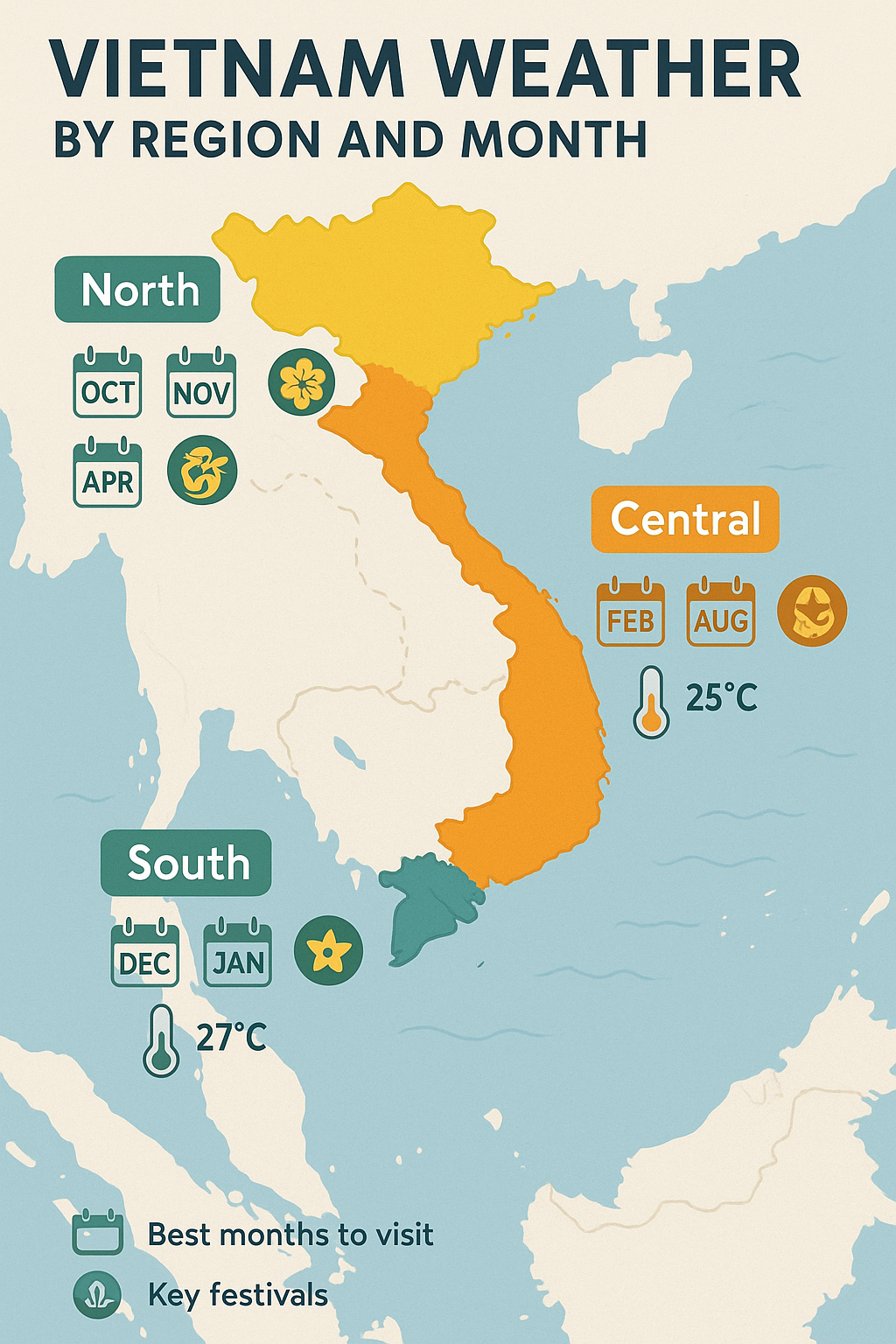Best Time to Visit Vietnam: A Comprehensive Guide for Every Traveler
When planning your adventure, understanding the best time to visit Vietnam is crucial for a memorable trip. Vietnam’s unique S-shaped geography means the country spans several climate zones, offering different weather and cultural experiences depending on the region and season. Whether you dream of trekking through misty mountains, relaxing on sunny beaches, or exploring vibrant cities, choosing the right time to visit will enhance every moment of your journey.
Why Does Timing Matter in Vietnam?
The best time to visit Vietnam depends on your personal preferences, chosen destinations, and desired activities. Vietnam has three main regions – North, Central, and South – each with its own seasonal patterns. Traveling at the right time not only maximizes pleasant weather but also allows you to join unique local festivals and avoid the crowds. Choosing your travel window wisely can mean the difference between catching breathtaking rice terrace views in Sapa or facing heavy rains in Hoi An.
Vietnam’s Regional Climate Overview
Let’s break down the weather by region to help you pick the best time to visit Vietnam:
- Northern Vietnam (Hanoi, Sapa, Ha Long Bay): Characterized by four distinct seasons. Spring (March-April) and autumn (September-November) offer mild temperatures, clear skies, and lush landscapes, ideal for sightseeing and trekking.
- Central Vietnam (Hue, Da Nang, Hoi An): Typically enjoys warm, sunny weather from February to August. Rainy season runs from September to December, sometimes bringing typhoons, especially to coastal cities.
- Southern Vietnam (Ho Chi Minh City, Mekong Delta, Phu Quoc): Has a tropical climate with dry season from December to April and a wet season from May to November. Dry months are perfect for island escapes and city explorations.
Month-by-Month Guide: Best Time to Visit Vietnam
Here’s a handy overview to help you decide when to go:
| Month | North | Central | South | Best Experiences |
|---|---|---|---|---|
| January | Cool, dry | Mild, sometimes rainy | Warm, dry | Halong Bay, Ho Chi Minh City tours, Tet prep |
| February | Mild, start of spring | Dry, pleasant | Sunny, dry | Festivals, Sapa trekking, beaches |
| March-April | Best: mild, sunny | Sunny, dry | Hot, dry | Flower season, Hanoi & Hoi An, Mekong cruises |
| May-August | Warm, occasional rain | Best: beach season | Rainy, hot | Da Nang beaches, island hopping |
| September-November | Autumn: cool, dry | Rainy, risk of typhoons | Rain decreasing | Sapa harvest, Hanoi autumn, fewer crowds |
| December | Chilly, dry | Mild, some rain | Start of dry season | Christmas in Saigon, Ha Long Bay |
Plan Your Perfect Trip
Ready to experience Vietnam at its finest? Discover top-rated tours and local guides at Heera Travel – your trusted partner for unforgettable journeys across Vietnam.
What to Do in Vietnam During Each Season?
Knowing the best time to visit Vietnam lets you catch the most exciting events and stunning scenery:
- Spring (February-April): Join Tet (Lunar New Year) celebrations, see peach blossoms in the north, and trek Sapa’s rice terraces in cool, dry air.
- Summer (May-August): Perfect for beach holidays in Da Nang, Nha Trang, or Phu Quoc. Enjoy vibrant night markets and island festivals, but bring sunscreen and light clothing for hot days.
- Autumn (September-November): Savor Hanoi’s romantic autumn, harvest season in the north, and quieter tourist sites. The golden rice terraces of Mu Cang Chai are especially spectacular.
- Winter (December-January): Visit southern Vietnam for warm weather, cruise the Mekong, or enjoy cool mountain retreats in the north. This is also the season for Christmas and New Year festivities in major cities.




Travel Tips: Making the Most of Your Vietnam Trip
- Check national holiday dates, especially Tet, as many shops may close and transport can be crowded.
- Book tours and hotels in advance for peak seasons (spring and autumn).
- Pack layers for the north, sunscreen and hats for the south.
- Always carry rain gear if traveling during the rainy months in Central or Southern Vietnam.
Frequently Asked Questions (FAQ) – Best Time to Visit Vietnam
- Q: Can I visit Vietnam all year round?
A: Yes, but the best time to visit Vietnam depends on which region you’re exploring. North is great in autumn and spring; central beaches shine from April to August; the south is warmest December to April. - Q: When is the rainy season in Vietnam?
A: Generally, the rainy season runs May to October in the south, and September to December in central Vietnam. - Q: When is Vietnam least crowded?
A: Late autumn (October-November) and late spring (April-May) tend to have fewer tourists and comfortable weather. - Q: When are the best festivals?
A: Tet (January/February), Mid-Autumn Festival (September), and local flower or harvest festivals in spring and autumn.
Case Study: Two-Week Vietnam Itinerary for the Best Weather
For travelers wanting the ideal blend of culture and nature, visiting in March offers sunshine in the north, calm seas in the center, and perfect beach weather in the south. A suggested two-week trip:
- Start in Hanoi: Enjoy the spring flowers and mild weather.
- Halong Bay cruise: Clear skies and stunning limestone scenery.
- Fly to Da Nang: Relax on My Khe beach and explore Hoi An’s lantern-lit streets.
- Finish in Ho Chi Minh City: Dive into street food, visit the Cu Chi Tunnels, and cruise the Mekong Delta.
For custom itineraries, local support, and the latest travel advice, connect with the experts at Heera Travel.

“Best time to visit Vietnam infographic: seasonal weather and travel tips by region.”
📞 Need Help Planning?
Hotline: +84983074915
Line ID: @heeratravel
